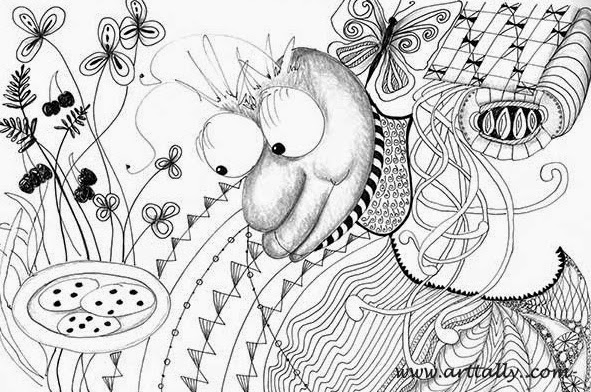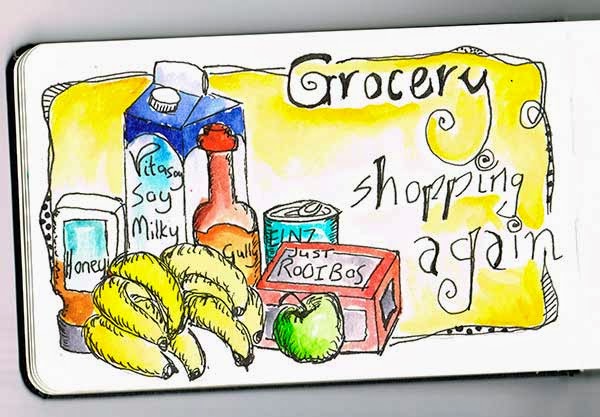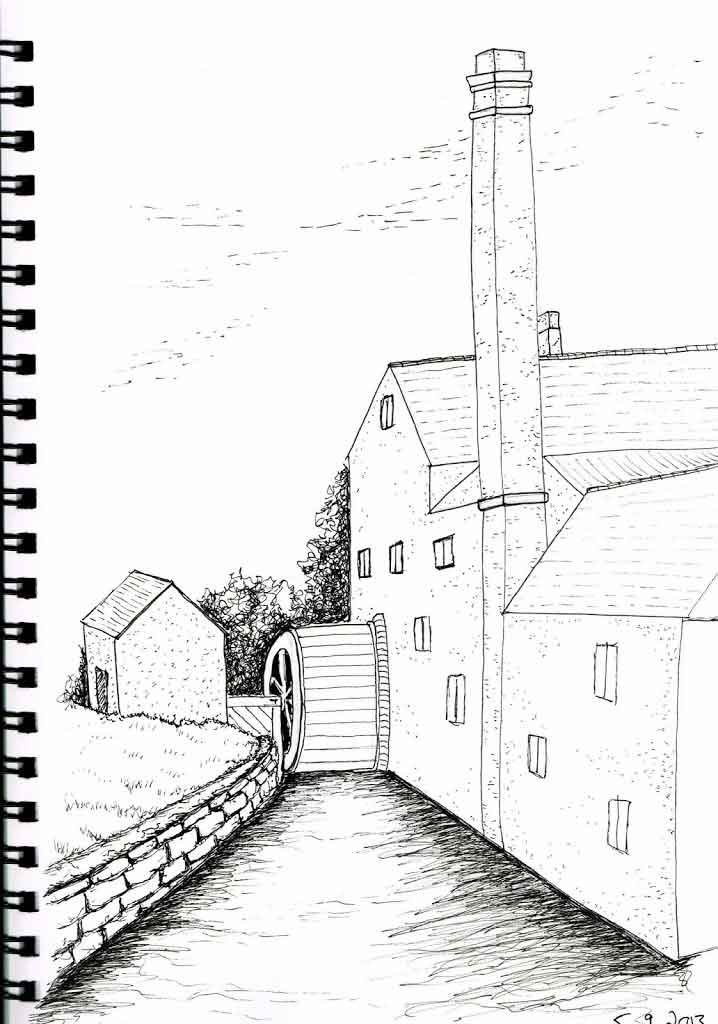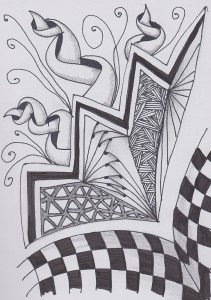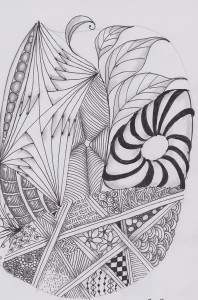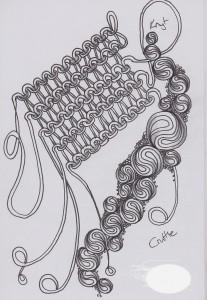| Pen doodle that started with a random squiggle |
I have been to a lot of little girls' seventh birthday parties recently, and every one seems to include a mandatory, very loud and heartfelt group rendition (or six) of 'Let it Go', from the movie Frozen. I have taken it as a message from the universe as art seems to be trying to teach me the same thing. Let go of control. Not so very long ago I was a working mother of baby twins in the middle of my PhD. My coping strategy back then was total control freakery (it's a word, let's just go with it...) That worked, quite well even... up to a point. My idea of control was to be totally organised, everything scheduled and prepared in advance, meals, play-dates, laundry, research seminars, work tasks, everything. At one point I remember trying to plan for my planning sessions! Obsessing over planning and preparation means you are living in the future. It becomes harder to remain present, and you can start missing out on any of the joys of now. And if your belief is that you must be prepared for every eventuality, what you are really telling yourself is that you are incapable of handling life on the fly. It turns out that the only thing you can be certain of is that uncertainty is unavoidable. Being organised is great, it's important. But when you find yourself viewing unforeseen circumstances as a planning and preparation failure, you know you have gone too far. The thing is, the very skills you use to plan and prepare are the skills you will draw on when something unexpected turns up. We all possess the creative skills to make the best of such a situation, as it arises, without prior planning. But we have to have enough faith in ourselves to allow that to happen. Learning to draw and paint is teaching me as much about life as it is about art. Maybe more. Cheapest therapy ever. I have been drawn to doodling (ok almost addicted), and I think it is because I have been reflecting on this idea of going with the flow, letting go of how something is supposed to be and just working with what turns up.
I started the doodle on this page with a random squiggle in the middle of the page. That seemed to be a funny face, so a face it became. I felt like making some patterns so I did. Apparently I was hungry because some cookies and cherries turned up. It is a surprising relief to just 'be'. I am learning that you can make art without a preconceived notion of how it should look when it is finished. And you can live your life well, without a perfect plan.
